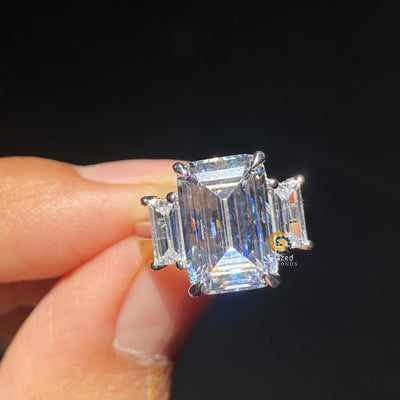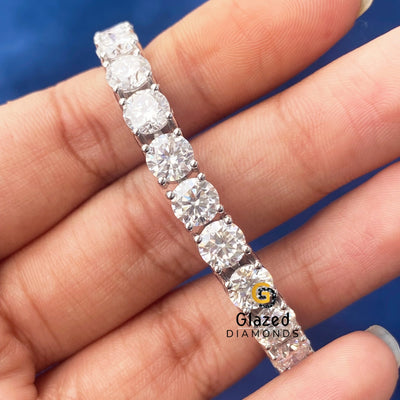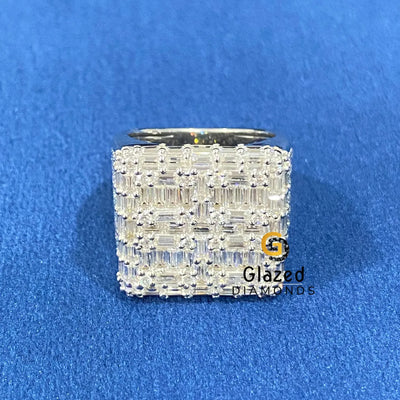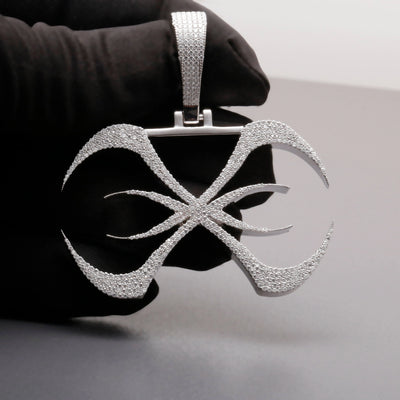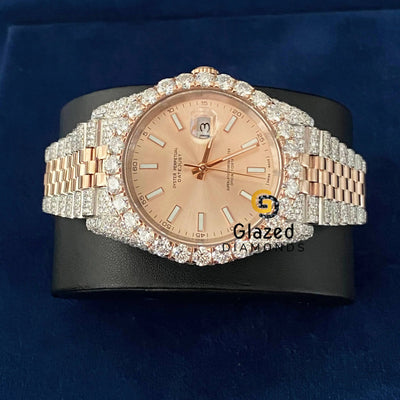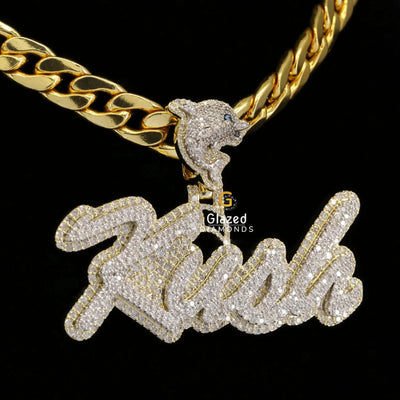Moissanite is a crystal-clear stone tuned for beauty. In the studio, we judge it by two things. Light on the hand and strength in daily use. The path to both starts with clean raw inputs, careful growth, and precise cutting. This walkthrough keeps it simple.
You will see how the Moissanite manufacturing process builds a single crystal, how color stays stable, and how cutters turn rough into bright faces that hold sparkle in real rooms.
Step-by-Step Moissanite Manufacturing Process
The Setup: Clean Inputs, Seeds, and a Tight Growth Cell
Everything starts with high purity silicon and carbon in a balanced ratio. Technicians prepare a growth chamber that holds a small seed crystal and a charge of silicon carbide powder. Air gets evacuated. Trace gases get controlled. Any tiny impurity can tint the crystal or create strain, so teams keep the environment steady and clean.
The seed sets orientation. That choice influences optical behavior and how the crystal will accept facets later. For jewelry, producers often target hexagonal polytypes that give stable optics and good polish. Each load logs lot numbers, time, and temperature plan, so the run stays traceable.
Crystal Growth: High Heat Sublimation Builds a Single Boule

High Heat and a Controlled Gradient
Growth starts in a chamber that holds steady heat and a gentle temperature slope. The solid charge sits near the hot zone. The seed sits in a cooler zone. That gradient is the quiet engine of the run and material near the heat turns to vapor. The cooler seed invites that vapor to land. Sensors track both zones so the balance stays true. When the gradient drifts, teams correct it fast.
Sublimation and Layer-By-Layer Build
The solid charge sublimates near the heat, then redeposits on the cooler seed. Each landing adds a thin layer. Over time those layers stack into a single crystal. Picture a slow snowfall that settles on one branch while the rest stays minimum. That image captures the patience needed here. The goal is steady arrivals, not bursts. Steady arrivals keep the crystal calm and keep faces bright later.
Run Length and Boule Size
Time scales vary. Small runs can wrap up quickly and still yield clean zones. Larger boules take longer yet pay you back. You get wider areas that cut into big stones and uniform melee without heavy sorting. The schedule favors quality over haste. When a step needs time, the team gives it time. That choice shows up later as smooth polish and even light.
Color Control and Stress Management
Color control begins during growth. Nitrogen and other traces sit near zero. Heat and pressure avoid sharp swings. A shock can plant stress lines that the eye may catch. Teams watch the curve and keep it smooth. If a sensor nudges off target, they correct it. Calm growth protects clarity and holds tone. The crystal that leaves this stage is clear, stable, and ready for precise cutting.
Cooling, Slicing, and Pre-forming Without Stress
When the target size is reached, cooling happens on a schedule. Too fast can trap stress. Too slow wastes energy and risks contamination. The slow path preserves clarity. The cooled boule then moves to slicing saws that cut wafers or blocks. Each slice avoids chatter marks and keeps orientation aligned for later facets.
Pre-forming shapes the rough into early versions of rounds, ovals, pears, or baguettes. The goal is to remove waste while saving the brightest zones. Good pre-forms respect the double refraction in moissanite. Waste cuts stay short. This is the quiet stage that protects face-up light later.
Color Tuning, Clarity Care, and Stability Checks
Modern moissanite already exits growth with a tidy color. Some labs still use carefully controlled thermal steps to set tone within near-colorless bands or to hold a warm target by choice. The point is stability. A client needs a stone that looks the same in January and in June.
Clarity care focuses on removing surface stress and polishing out micro lines. Under darkfield scopes, graders flag any features that could show at arm’s length. Eye-cleaning is the aim. If a tiny mark hides under a prong, that can be acceptable. If it sits on the table, it moves the piece to a different use, like small accent cuts.
Cutting Maps, Polish, and Final QC That Protect Light

Cutting turns potential into sparkle. For rounds, facet maps aim for a bright table and controlled fire that feels elegant in office light and lively at dinner. For fancy shapes, angle sets avoid dead zones and protect corners. Moissanite’s high refractive index rewards crisp meet points. Lazy geometry leaks light, while sharp symmetry keeps the face awake.
Polish uses diamond grit and patient laps and heat stays low to avoid surface haze. Each facet gets inspected under magnification and under real light. We check two things after every run. Pattern and pulse. Pattern is the static view. Pulse is the change you see as the stone moves. Both must feel calm and alive at the same time.
Quality checks finish the run. Teams verify size tolerance, color band, and clarity target. Instruments read refractive behavior. Human eyes judge face-up beauty in mixed light. Only then do stones move to matching trays for halos, bezels, or solitaire use.
>Conclusion: Why Process Quality Matters on Your Hand
The Moissanite manufacturing process is a chain of precise choices. It starts with clean inputs and steady growth, continues with gentle cooling and smart preforms, then finishes with facet maps built for light and strict QC. Each stage protects color stability and keeps the sparkle steady in real rooms.
That is why well made moissanite reads bright in soft daylight and still looks refined at night. At Glazed Diamonds, we select tight tone bands, cut for calm even fire, and set with tidy prongs. Need stones matched for halos or bezels, or a solitaire that feels light yet looks bold? We will shortlist cuts that fit your day and your style.
>




